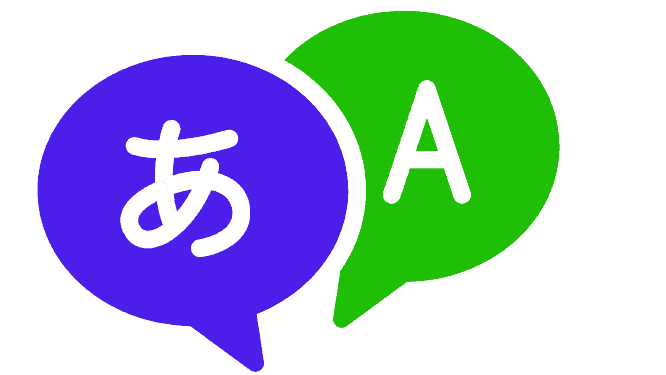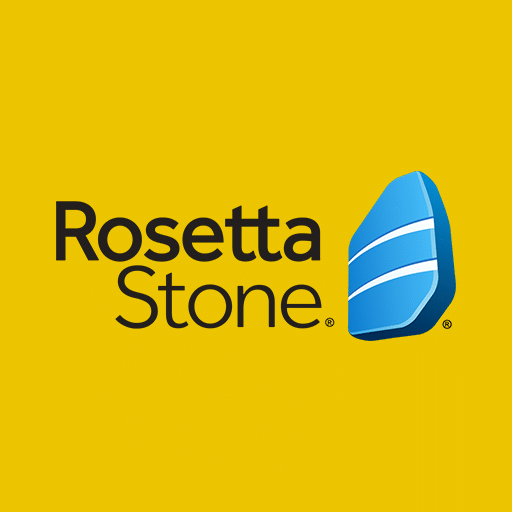Rosetta Stone vs Duolingo comparison: Welcome to the world of language-learning applications, where Rosetta Stone and Duolingo represent formidable alternatives. For those embarking on a linguistic journey and seeking the ideal companion, the decision between these two platforms is pivotal. To help you choose the ideal language learning program, we’ll compare Rosetta Stone and Duolingo and examine their advantages, disadvantages, and subtle differences. We’re here to support you in making a well-informed choice that is suited to your language learning goals, whether you prefer a structured curriculum or gamified involvement.
Rosetta Stone vs Duolingo Comparison
Rosetta Stone Overview
Rosetta Stone is a renowned language learning platform, known for its immersive approach. It uses a strategy that is mostly visual and imitates how people learn languages naturally. Context and visual clues are prioritized in lessons to improve understanding and recall.
Grammar, pronunciation, and vocabulary are covered throughout the curriculum as it advances from beginner to intermediate levels. Practical communication abilities are improved through cultural context and real-world examples.
The platform stands out because to its focus on context-rich comprehension and organized approach, which is ideal for individuals seeking a formal learning route. Rosetta Stone is a top choice for anyone looking to study a language in-depth due to its dedication to thorough learning.
My Rosetta Stone Experience
Upon my first login to the Rosetta Stone app and website, it prompted me to choose my proficiency level – beginner, intermediate, or pro. I chose beginning and put “work” as my aim and was pleasantly surprised by how sleek and snappy the user interface was.
My first dive into the Spanish lesson attracted my interest right away since it inspired me to set up my microphone and try saying simple Spanish phrases. The lack of translations made this a difficult but interesting task.
The option to schedule live classes with native speakers intrigued me, offering a more interactive and immersive learning experience. I noticed a ton of courses designed for different situations, like travel, school, work, and shopping — a feature I thought was really useful.
The availability of videos on demand that helped one sound more like a native speaker stood out as a highlight. Rosetta Stone’s diverse content, including phrasebooks, audio companions, alphabet lessons, and language basics, impressed me with its comprehensive approach.

I was exposed to a wide range of learning approaches, including pronunciation, vocabulary development, grammar, reading, and writing. The online version’s slow loading speed was one issue, however, which sometimes impeded the flawless learning flow.
The “Story” option, which let me read, listen to, or record myself reading tales, was one of my favorites. The “phrasebook” component was quite helpful in teaching me how to have basic conversations about things like greetings, interactions in hotels, and eating out.
The Rosetta Stone app and website impressed me with its efficient teaching methods, extensive library of information, and interactive features. Although the site may need some technological improvements, it provided a comprehensive and interesting path for language acquisition.
Drawbacks
However, I discovered a few negative aspects of the Rosetta Stone website and app that affected my journey:
The initial excitement of a free trial was dampened by the realization that it lasted only for three days. After then, no free material was available, which was disappointing and would discourage prospective users from exploring the site further.
The lack of translations was one of the biggest problems I ran across. Although the method of learning without direct translations is admirable, there have been few times when understanding meanings or finding translations wasn’t as easy as I had hoped. This complicated the learning process further and increased its difficulty.
The platform’s immersive nature and abundance of material continued to be useful despite these shortcomings. Although the drawbacks were clear, they didn’t totally outweigh the benefits, and in the end, Rosetta Stone’s app and website impressed me with its innovative approach to language learning.
- Immersive Learning: Rosetta Stone’s contextual approach mirrors natural language acquisition, promoting deeper understanding and retention.
- Structured Curriculum: The platform offers a well-organized curriculum, guiding learners through a gradual progression from basics to advanced levels.
- Speech Recognition: The speech recognition technology provides instant feedback on pronunciation, helping learners refine their accents and speaking skills.
- Comprehensive Lessons: Rosetta Stone covers grammar, pronunciation, and vocabulary extensively, ensuring a holistic language learning experience.
- Visual Cues: The use of images aids in understanding words and concepts within real-world contexts.
- Cultural Insights: Lessons incorporate cultural elements, enhancing practical communication skills for real-life scenarios.
- Language Intuition: The immersive method helps learners develop an intuitive feel for the language, promoting fluid conversation.
- Personalized Learning: While not heavily adaptive, the platform adapts to learners’ progress, ensuring a personalized learning path.
- Translation-Free Approach: The lack of direct translations might be challenging for beginners who seek immediate word meanings and context.
- Costly: Rosetta Stone’s pricing can be relatively higher compared to some other language learning apps, potentially limiting access for budget-conscious learners
- Limited Gamification: For those motivated by gamification, Rosetta Stone’s approach might feel less engaging and competitive.
Duolingo Overview
Popular language-learning program Duolingo is recognized for its game-based methodology. It promotes regular practice and gives flexibility with bite-sized sessions.
Learning becomes interesting and encouraging because to gamification features like points, gems, streaks, and leveling up. Because of its flexible curriculum, it is appropriate for a variety of learning methods.
Through its collaborative features and language clubs, Duolingo promotes a feeling of community. With the opportunity to pay for enhanced capabilities, the app’s freemium business model offers free access to its basic functions.
For those looking for an engaging and interactive language learning experience, it’s user-friendly design, gamified learning environment, and accessible approach make it an appealing option.
My Duolingo Experience
When I first logged into the Duolingo app and website, it greeted me with a prompt to select a language and specify my reason for learning. I chose French because I was excited about the potential of broadening my language knowledge.
Identifying items and matching translations were among the first questions, which were pleasantly simple and a fantastic way to ease into the learning process.
The audio questions were a nice touch that gave the exercises a more participatory feel. I had to use my vocabulary in context to remember it for the sentence completion assignments, which helped me to learn more. What caught my attention was the pleasant melody that accompanied each tap – a small touch that made the learning experience feel more engaging.
I found the leaderboard part fascinating since it allowed me to compare my development to that of learners all across the globe. Finding out where I stood was interesting and provided inspiration to work toward better.
The gamification components, such gathering gems and maintaining hearts, gave my learning process a lively edge. They quietly urged me to keep up a regular practice schedule and guarantee a great overall experience.
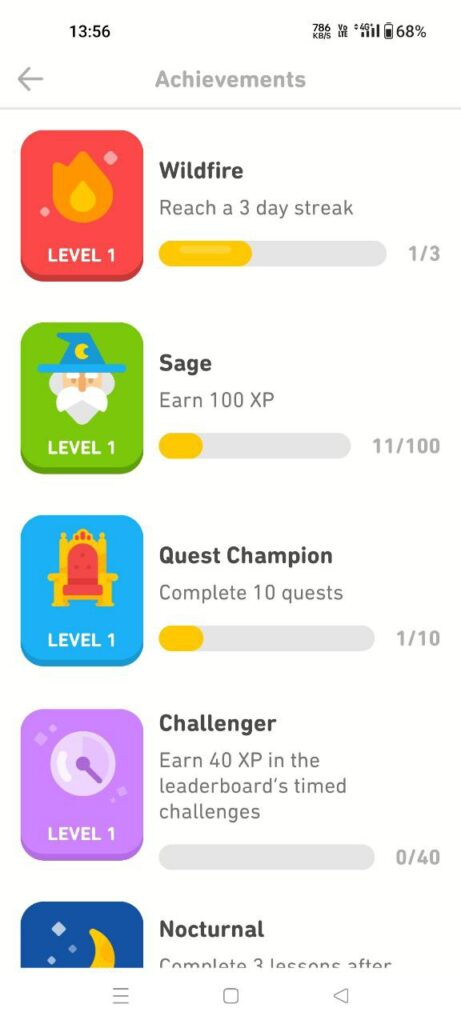
My experience with Duolingo’s app and website was distinguished by its user-friendly design, a variety of activities, and the addition of gamified aspects that gave the impression that learning a new language was an exciting journey.
Drawbacks
Although I had mostly wonderful experiences with the Duolingo app and website, there were a few issues that I noticed along the way:
Despite being aesthetically pleasing, the user interface sometimes presented navigational difficulties. It was a little challenging for me to leave classes that were already in progress or go on to other areas. My learning flow was infrequently disturbed by this navigational difficulty.
The lack of variety in the study materials was one thing that didn’t quite impress me. The classes seemed to have a fairly repetitious structure, which eventually affected my interest. The learning process might have been more dynamic and rewarding with a wider variety of information.
Another issue I ran across was the free version’s lack of a speech option. The ability to practice pronunciation is essential for language learners, thus I felt constrained without it without a paid membership. uTalk is a good alternative to Duolingo if you want to practice speech.
It was sad that Duolingo decided to limit the ability to download whole courses offline starting in 2021. The ability to access classes offline was previously quite helpful for studying on the fly, therefore this modification inadvertently reduced the convenience.
- Gamified Learning: Duolingo’s gamification elements, like points, streaks, and leveling up, keep learners motivated and engaged.
- Bite-sized Lessons: Short lessons make it convenient to fit learning into busy schedules, encouraging daily practice.
- Extensive Language Selection: With a wide range of 43 languages, Duolingo offers exposure to diverse linguistic pursuits.
- Freemium Model: Core features are accessible for free, making Duolingo an affordable choice for language learners.
- User-friendly Interface: Duolingo’s playful design and easy navigation contribute to an enjoyable learning experience.
- Community Engagement: Language clubs and discussion forums provide a sense of community and collaborative learning.
- Quick Practice: The platform’s adaptability allows users to focus on specific areas for targeted practice.
- Limited Depth: The focus on gamification and quick lessons might result in shallower understanding of complex grammar concepts.
- Lack of Context: Some exercises lack context, potentially making it challenging to grasp the practical use of certain vocabulary.
- User-generated Content: While collaborative, the accuracy of content can sometimes be influenced by other users, leading to inconsistencies.
- Limited Offline Access: You can’t download full courses offline, but only a few lessons.
Duolingo & Rosetta Stone Detailed Comparison
User Interface & User Experience (UI/UX)
I found the user interfaces and experiences of Rosetta Stone and Duolingo to be rather different. The Rosetta Stone interface had a sleek, businesslike feel to it and had a clear arrangement that logically led me through the lectures. The amount of pictures sometimes seemed overpowering, but the visual clues were useful in improving understanding.
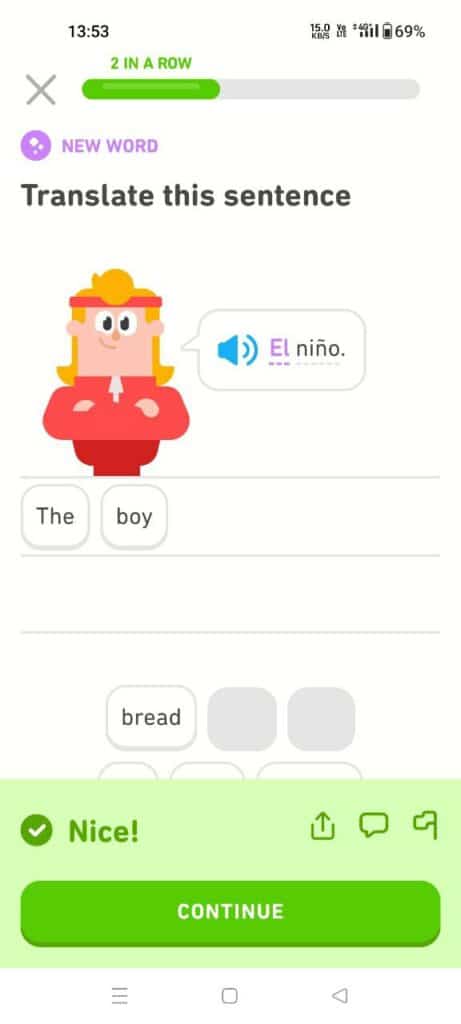
Contrarily, the gamification features of Duolingo’s design gave off a lighthearted feeling. The points, streaks, and leveling up motivated me to keep learning daily. The app’s informal look, meanwhile, may not appeal to everyone, and some people could see it as less serious for language learning.
Rosetta Stone was user-friendly and provided a well-structured study route that matched my inclination for a formal curriculum. I was able to monitor my development as I moved up from the fundamental to the advanced levels.
On the other hand, it’s micro-learning strategy suited my hectic schedule well. I valued the convenience of finishing quick classes on the fly. Rosetta Stone’s emphasis on context and extensive courses did lead to a deeper comprehension, but I also like Duolingo’s straightforward and entertaining tasks.
Rosetta Stone can be your best option if you’re looking for a structured, context-rich learning environment. On the other hand, Duolingo could be more intriguing if you like gamified learning and the adaptability of bite-sized courses. Both provide distinctive user experiences that accommodate various learning preferences.
Language Course Selection
After looking over the language learning options on Rosetta Stone and Duolingo, I discovered that each of them has a unique set of advantages. Although less comprehensive than Duolingo’s 43 languages, it nonetheless offered a wide variety of widely used tongues. You can change the language on Duolingo anytime you like. I was impressed with the richness of each language’s curriculum, which included grammar, vocabulary, and pronunciation.
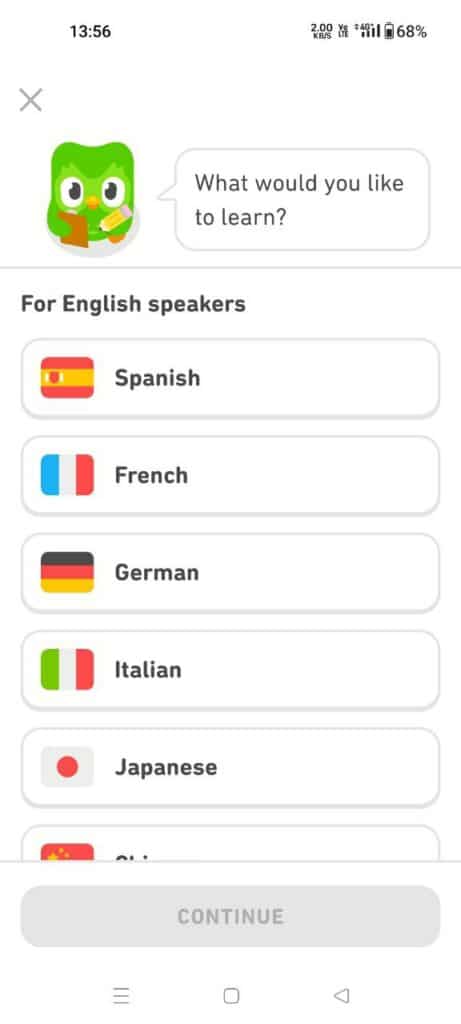
On the other hand, Duolingo’s broad range of languages was impressive, allowing me to explore more niche options. The brief 4-minute lessons were ideal for my hectic schedule and made it simple to fit in language practice during brief pauses. However, compared to Rosetta Stone’s typical 18-minute sessions, this shortness sometimes cost a better comprehension of certain subjects.
While Duolingo’s wide range of language selections satisfied my curiosity and desire to dabble in many languages, Rosetta Stone’s exclusive concentration on fewer languages offered a thorough learning experience. Both systems offer advantages, depending on whether your goal is to get in-depth expertise or exposure to a wide range of languages. if you want even a dipper dive at any foreign language, you can also check Rocket languages.
Curriculum
I discovered that Rosetta Stone’s strategy tended to favor a more conventional and intensive approach with regard to the language courses itself. The courses were created to mimic how we learn our native tongues, strongly relying on context and visual clues to improve comprehension.
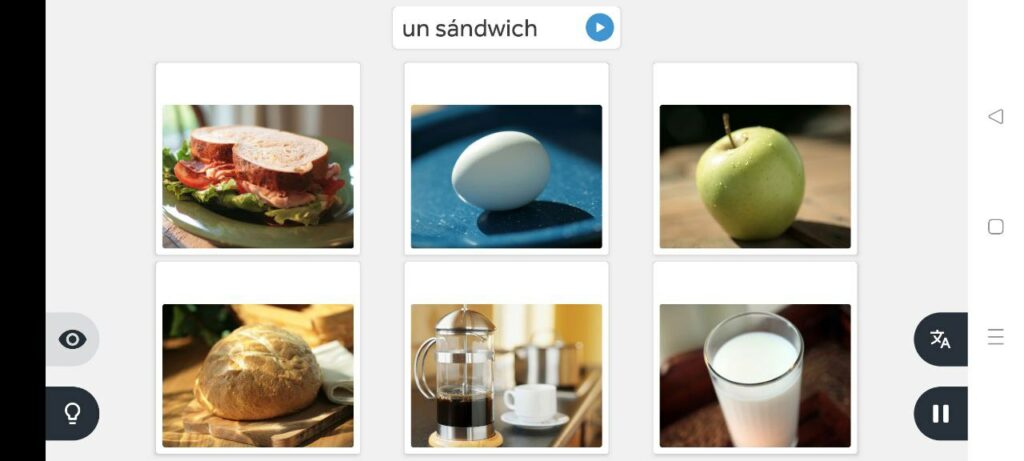
Even while it could take longer to master each language using this method, it seemed like a holistic and all-encompassing learning process, particularly for languages I had no prior knowledge of.
However, Duolingo’s courses were designed in a gamified way, which gave the impression that learning was more like playing a game than attending a formal lecture. The brief courses were ideal for studying while on the move, and the competitive features – such as streaks and leaderboards – added some incentive.
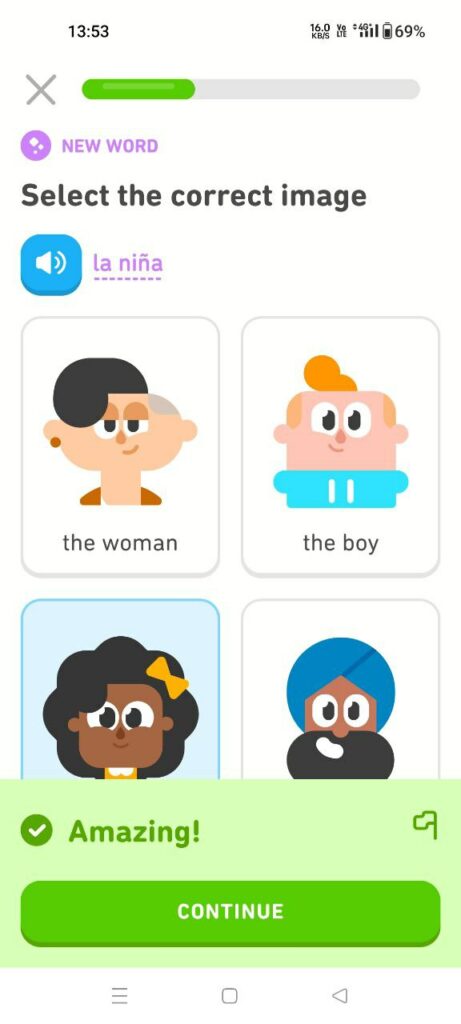
Although Duolingo offered a wide variety of languages, I found that each course’s complexity sometimes fluctuated, with some languages having more in-depth information than others.
Rosetta Stone’s immersion strategy matched my need for a deeper understanding, particularly for languages I was serious about studying. When I was looking for a more relaxed and enjoyable method to learn new languages or keep up a regular practice schedule, Duolingo’s gamified approach appealed to me. The decision between the two was based on the degree of commitment I was willing to make and the kind of language study that resonated to me.
Learning Methods and Techniques
Rosetta Stone employs a method that replicates natural language acquisition. Similar to how we learn our native language, it places a strong focus on context and visual signals. This strategy worked well in aiding my understanding of unfamiliar terminology and ideas in a practical setting.
I was taken through an organized program from beginner to intermediate levels, gaining a thorough knowledge of grammar, vocabulary, and pronunciation. This breadth of information was especially helpful for the languages I want to master.
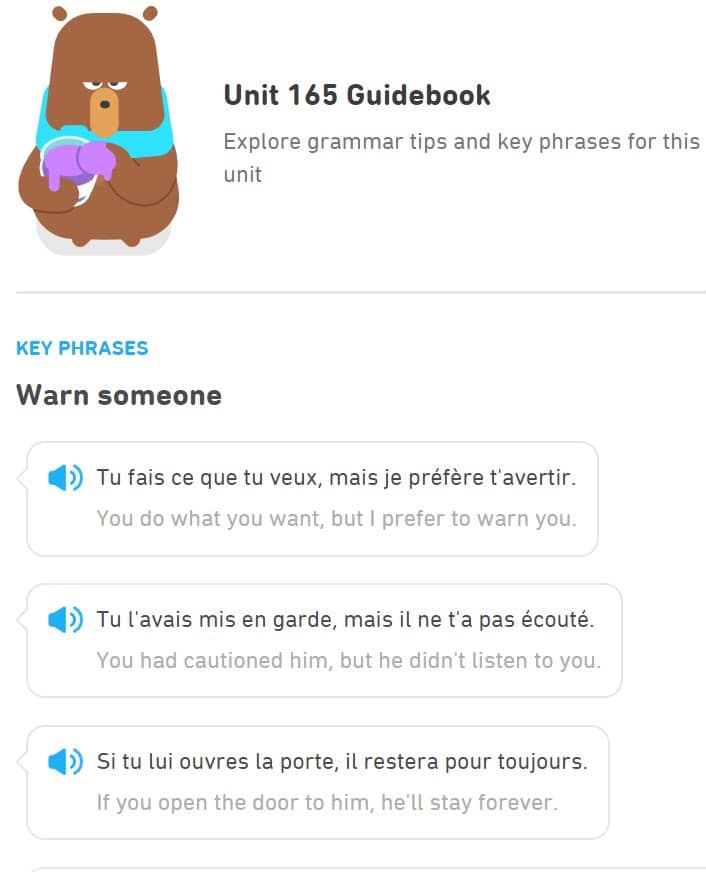
The strategy used by Duolingo is more gamified and bite-sized. This was especially helpful when I needed to squeeze in brief practice sessions between breaks. The achievements, streaks, and leveling up encouraged me to continue regularly learning new things.
I did find that this approach sometimes resulted in a lesser comprehension of certain subjects, particularly when it comes to more intricate grammatical ideas. Community involvement elements like language clubs and conversations enhanced learning via social interaction.
Gamification and Engagement
I had firsthand experience with two different strategies that tried to make language learning interesting after actively interacting with the gamification components of both apps. There are significant differenced between Duolingo & Rosetta Stone when we talk about gamification.
Rosetta Stone places more of an emphasis on a planned, immersive learning process than it does on gamification. While this approach lacks the competitive elements of Duolingo, it compensates by simulating a real-world context.
I remained dedicated to this strategy since I felt like I was understanding more and making progress slowly. However, this feature could appear insufficient to those who are driven by gamification.
On the other hand, Duolingo excels in gamification. The addition of a layer of incentive provided by the points, gems, increase XP, streaks, and leveling up promoted everyday study. The bite-sized courses fit with my hectic schedule and were ideal for quick practice sessions. It seemed more like a game than a typical class because of the competitive elements and the feeling of community fostered by language clubs.
In essence, Rosetta Stone’s method is probably appealing to you if you want systematic, intensive learning. On the other hand, Duolingo’s gamified experience can be more appealing if you like the challenge of leveling up and participating in friendly competition.
Pronunciation Practice
After exploring the pronunciation exercises on Rosetta Stone and Duolingo, I saw pronounced variations in how each program approaches this essential part of language learning.
Rosetta Stone emphasizes pronunciation heavily and often incorporates it naturally into courses. The platform’s voice recognition software analyzed the precision of my pronounciation and provided immediate feedback. Although this tool helped me improve my speech, it sometimes seemed too tight and made it difficult to precisely replicate certain sounds.
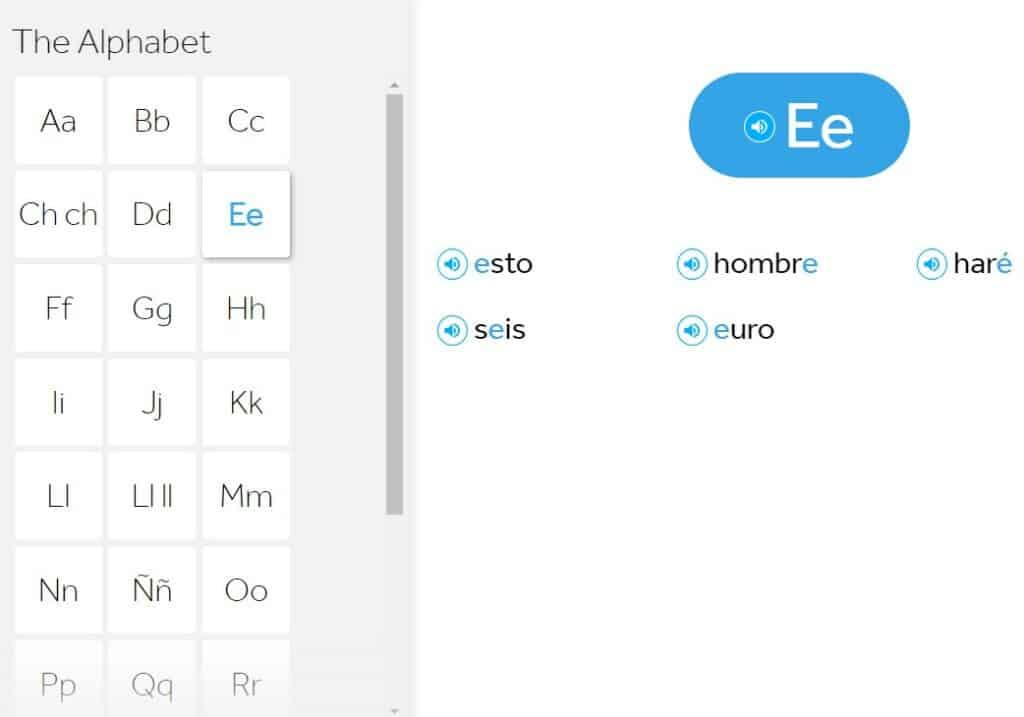
While Duolingo also provides pronunciation practice, it is less reliable than Rosetta Stone. Others did not emphasize pronunciation while others did. Because of Duolingo’s reliance on the user’s self-evaluation, there was no real-time pronunciation evaluation present. Although this strategy could seem more lenient to novice speakers, it might impede the development of proper pronunciation.
The interactive method used by Rosetta Stone is perhaps more advantageous if you place a high priority on thorough pronunciation practice. Duolingo nevertheless provides some potential for growth if you would like take a somewhat more laid-back approach and are prepared to evaluate your own pronunciation. Pronunciation is indeed a crucial skillset that USA universities (that accept Duolingo score) demands at the time of admission.
Progress Tracking and Analytics
Having tracked my progress on both Rosetta Stone and Duolingo, I discovered that each platform provided unique ways to measure and evaluate my progress in learning a new language.
It offered thorough progress monitoring and in-depth analyses. I could quickly see the classes I had finished, my level of skill, and the areas I wanted to improve. The platform’s organized curriculum let me track my progress via levels and modules, giving me a feeling of success. For people who want a planned, orderly approach to learning, this strategy performed effectively.
The monitoring of progress on Duolingo was increasingly gamified, with points and streaks acting as measures of consistency. Although it lacked Rosetta Stone’s extensive statistics, it did provide a picture of my everyday studying patterns.
Even while I wasn’t making as much progress in the material as I would have with Rosetta Stone, the friendly competition and leaderboards in the language clubs gave me the motivation I needed to keep playing and keep my streak going. If I missed practicing for the entire day, I got email reminders immediately.
Rosetta Stone app vs Duolingo Mobile App Features
After investigating the mobile app features of both Rosetta Stone and Duolingo, I found a number of distinctions that appeal to various learning methods and lifestyles.
The mobile app for Rosetta Stone is an addition to its extensive course offerings. It enables mobile access to classes, ensuring that I could continue organized studying even while I was away from my typical study space.
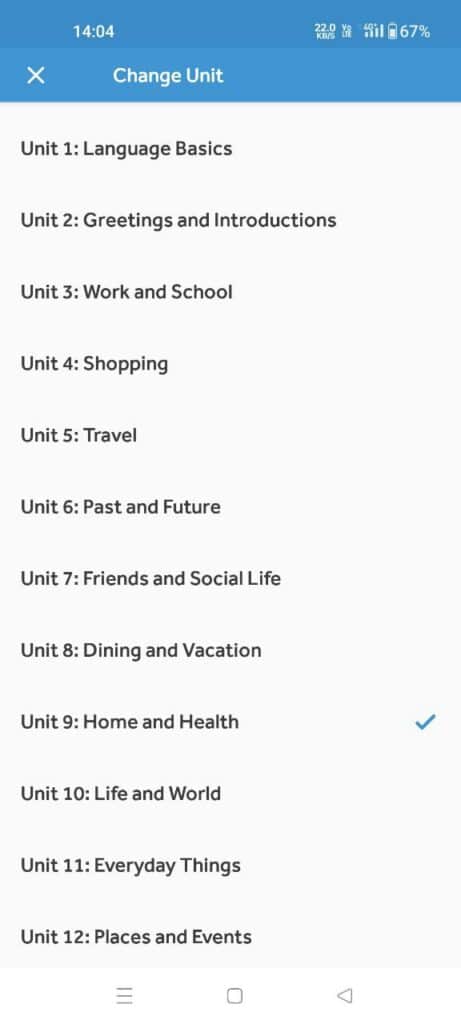
The immersive experience was maintained through the mobile app’s inclusion of features like interactive activities and voice recognition. In contrast to other more contemporary interfaces, I found that the app’s design seemed a little stale and less appealing.
On the other hand, the gamified features of Duolingo’s mobile app made it successful. The little lectures were ideal for in-between practice sessions. The app’s colorful and entertaining design made for a fun experience.
It was simple to maintain consistency with everyday practice because to the streaks and points, which provided incentive. However, some users may find the learning material a little less in-depth than they would with Rosetta Stone because of the gamified approach.
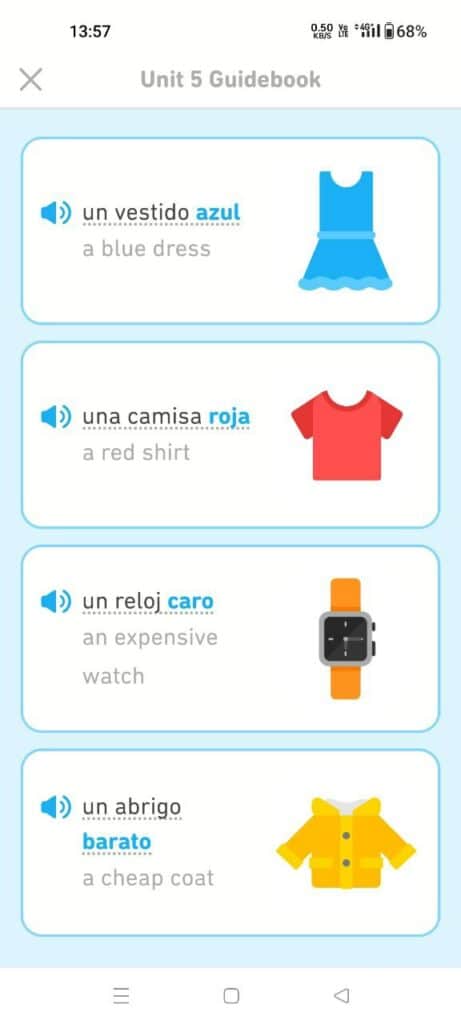
The mobile app for Rosetta Stone is a useful addition to the desktop version if you want organized, intensive study. If you prefer brief practice sessions and gamified learning, Duolingo’s app provides a fun and practical option.
Vocabulary Building Tools
After exploring the vocabulary-building features of Rosetta Stone and Duolingo, I discovered that each service provides different ways to improve language ability.
The method of vocabulary development in it is interwoven into its engaging courses. Contextual word and phrase introduction helps with understanding and recall.
The software places a strong emphasis on visual clues, which successfully allowed me to connect words with their meanings. But the focus on context might sometimes make it seem like language learning isn’t the only thing that’s important.
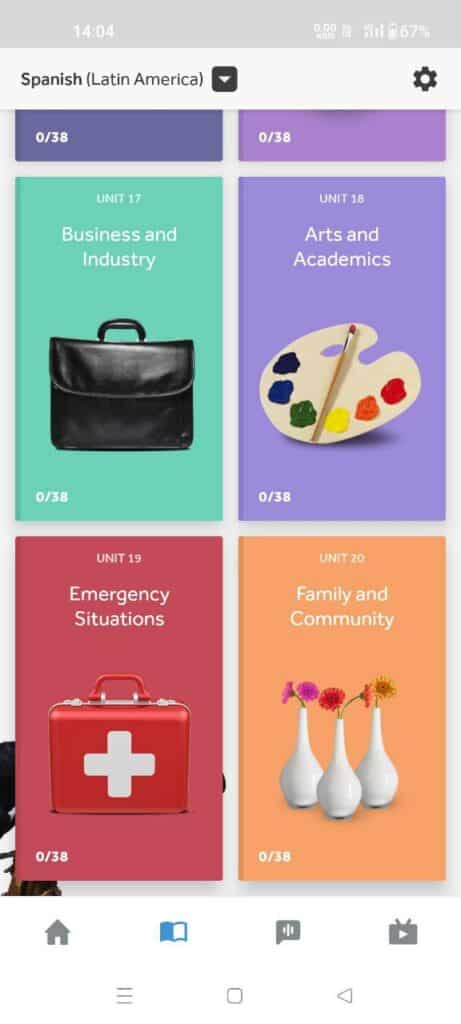
On the other hand, Duolingo provides focused exercises that concentrate on vocabulary growth. I can create a word bank using the platform, which introduces new terms and gives translations.
Through a variety of activities, repetition helps to strengthen retention. However, I noticed that the words were often introduced in isolation, which sometimes made it challenging to understand how they fit within a sentence.
Rosetta Stone’s approach may be more attractive if you want to acquire vocabulary in a contextual way. Duolingo’s method could work better for you if you like focused activities to increase your vocabulary.
Offline Learning Options
I found differences in how Rosetta Stone and Duolingo approach learning without an internet connection after exploring their offline learning options.
Through its mobile app, Rosetta Stone provides offline access to its classes. This function is especially useful for people who want to keep studying while traveling or in remote locations with poor internet. You can download the audio & other language lessons & save it onto your mobile device.
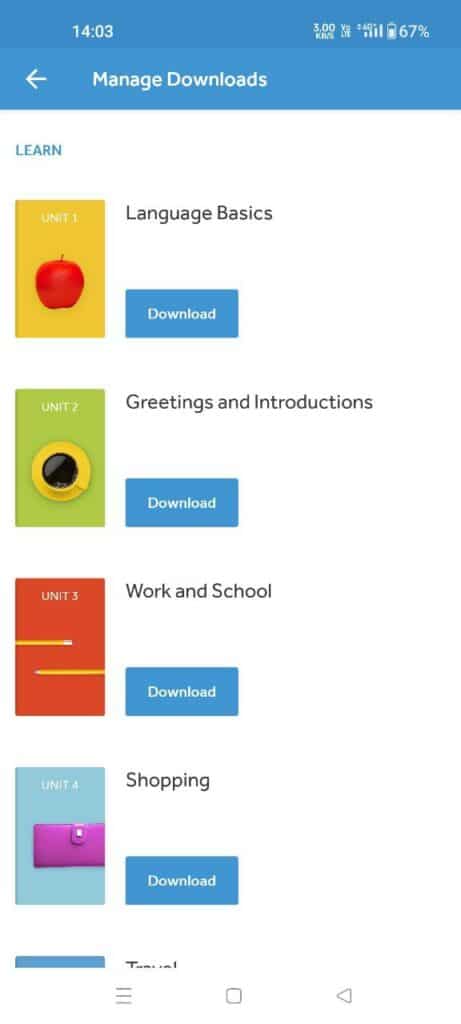
In contrast to the complete online version, I discovered that the offline experience was constrained. The comprehensiveness of the learning experience was sometimes compromised by the fact that several interactive features, including voice recognition, were often deactivated.
Duolingo also provides offline access to lessons on its mobile app, allowing me to practice without an internet connection. But, Duolingo has removed the ability to download the entire course in 2021. sessions. You can only download a few lessons to learn offline. The absence of new courses or material updates might prevent progress during protracted offline periods. Mondly is a great alternative to Duolingo if we consider offline learning.
Personalized Learning and Adaptive Algorithms
Having used Rosetta Stone and Duolingo’s customized learning and adaptable algorithms, I discovered that each platform has a different strategy for adjusting the learning experience to suit user demands.
The individualized learning offered by the platform seeks to imitate the process of learning a language naturally. Although it does not place a strong emphasis on customized content, its organized curriculum progressively becomes more sophisticated.
The focus on context and visual cues aids comprehension. Instead of using adaptive algorithms, I discovered that customization was more implicit and depending on the user’s progress through the program.
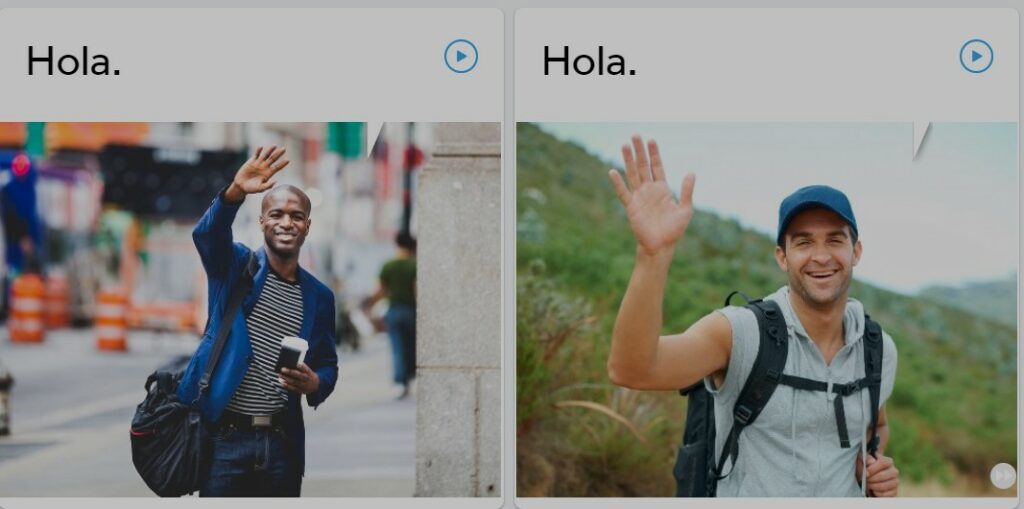
On the other hand, Duolingo uses adaptive algorithms that modify material according on performance. To close learning gaps, the app adapts activities and courses based on your strengths and shortcomings.
This strategy seemed more flexible and responsive, adjusting to my evolving demands. However, sometimes I thought the customisation may not be as precise as I had hoped, resulting in the need to retake activities even after understanding certain ideas.
The strategy used by Rosetta Stone might be appealing to you if you prefer a more organized, context-rich approach. Duolingo’s individualized learning and algorithms could offer a better learning experience that is more flexible and responsive.
Translations
Comparing translations on Rosetta Stone and Duolingo, I discovered varying approaches that offer distinct benefits for language learners.
Immersive learning is highly valued by Rosetta Stone, which promotes comprehension without the need for translations. It provides vocabulary and phrases within context as opposed to providing exact translations, making it easier for me to intuitively connect words with their meanings.
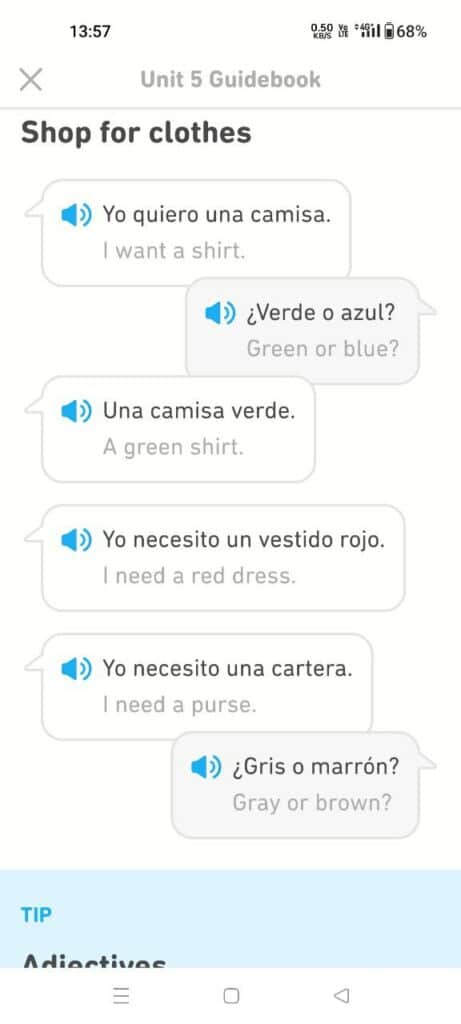
This approach is useful for developing linguistic intuition, although sometimes it made me wonder what the literal translations of certain expressions were. However, that doesn’t mean Rosetta Stone has completely eradicated the translations They are available, but with a little tweak.
On the other hand, Duolingo offers accurate translations along with new words and phrases. When trying to comprehend a phrase’s immediate meaning and context, this method is extremely helpful. But I found that sometimes the emphasis on translations took away from the immersion part, making it seem less like learning in the milieu of the target language.
In essence, Rosetta Stone’s method promotes linguistic intuition by emphasizing understanding in context. The translation-focused approach utilized by Duolingo provides a more quick comprehension but might be less engaging.
Pricing
| Plan | Duolingo | Rosetta Stone |
|---|---|---|
| 1 Month | $6.99 (43 languages) | Not Available |
| 12 Months | $84 (43 languages) | $11.99/mo (1 language) |
| 3 Months | Not Available | $7.99/mo (1 language) |
| Lifetime | Not Available | $179/one time payment (25 languages) |
Both platforms provide a range of pricing options to suit diverse tastes and price ranges. With monthly and annual memberships, Duolingo’s programs provide affordable possibilities. Its programs could be excellent for language lovers who want to learn many languages since they have access to 43 different languages.
On the other hand, Rosetta Stone’s plans vary in terms of language availability. The lifetime subscription provides access to 25 languages, in contrast to the 3-month and 12-month plans’ single-language emphasis.
How much Rosetta Stone cost? If you wanna give it a try, you can select the 1 -month plan for as low as $11.99 for any one language. If you have the conviction, consider going with Rosetta Stone lifetime subscription priced at $179 for all 25 languages. (Not to forget all plans has 30-days refund policy upon cancellation).
It’s organized curriculum and intensive approach are reflected in the cost, making it a wise choice for committed students looking for in-depth competence.
Duolingo’s price is more budget-friendly in terms of cost and return on investment (ROI), particularly for those who are interested in learning several languages. Although Rosetta’s courses are more expensive, they provide a more thorough learning experience and delivers a greater return on investment for those wishing to become fluent and develop practical communication skills in a particular language.
What are the key differences between these apps?
In addition to the points already mentioned, there are a few more significant differences between Rosetta Stone and Duolingo that should be mentioned.
Rosetta Stone’s emphasis on a more formal curriculum might be appealing to those who thrive in structured learning environments. For an additional price, it provides live tutoring sessions, adding a personalized touch that could enhance your language learning. This extra fee can be too much for certain customers, however.
On the other hand, folks on a tight budget could benefit greatly from Duolingo’s freemium approach since it gives them access to the essential services. Learners can feel like they belong to a group because the app allows for talks and community involvement. However, this also implies that user-generated material can occasionally impact how accurate replies are.
Comparing Duolingo plus vs Rosetta Stone, the first emphasizes immersion and depth, whereas Duolingo’s gamification and flexibility make it a good alternative for casual learners and multilingual learners.
Rosetta Stone is best for whom & how?
The learners who appreciate an organized, thorough, and immersive approach to language learning would benefit most from Rosetta Stone. This approach works well for those who are committed to following a more structured curriculum and are serious about learning a new language.
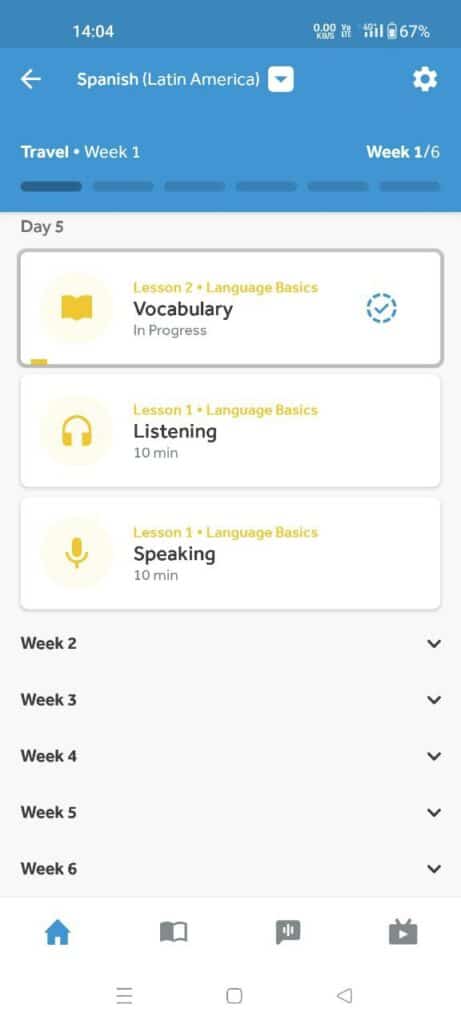
The platform is perfect for individuals who like context-rich knowledge since it makes understanding easier via the use of pictures and real-world examples. It is ideal for students who want to tackle a comprehensive grammar, pronunciation, and vocabulary program.
It could be a great option for students who value the chance to mimic the process of naturally picking up a language. Rosetta Stone’s systematic and immersive methodology will successfully lead you on your language learning journey if you’re trying to establish a solid foundation and gain useful communication skills.
Duolingo is best for whom & how?
Duolingo is an excellent choice for learners who value a gamified and flexible approach to language learning. It’s best suited for those who want a more relaxed and pleasurable method to learn new languages, keep up their language proficiency, or do fast practice sessions.
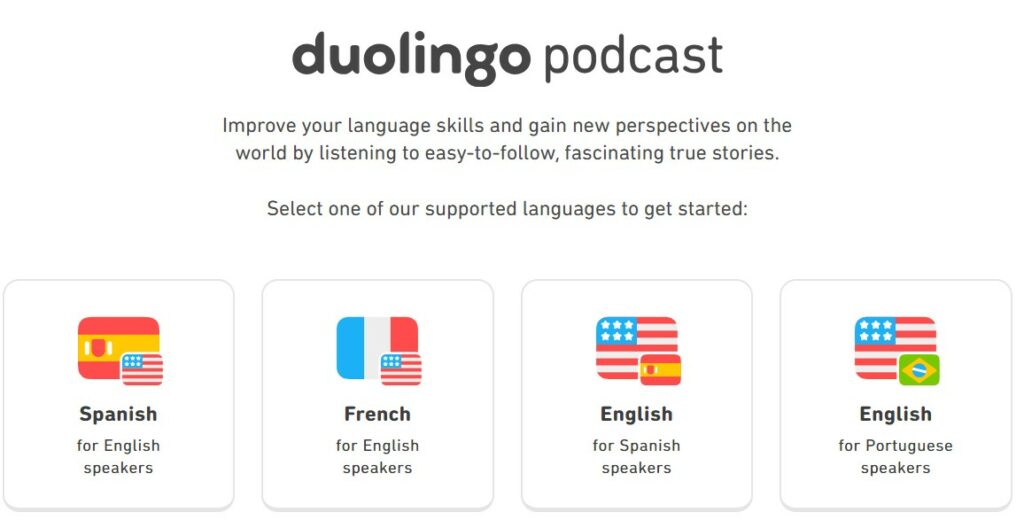
Because the platform’s bite-sized exercises are simple to fit into hectic schedules, it is perfect for those who learn best from brief, everyday lessons. It is a wonderful choice for people who value gamified learning experiences because of its gamification features, such as points, streaks, and leveling up, which constantly motivate users to practice consistently.
Due to its wide choice of languages, Duolingo is ideal for language fans who wish to learn numerous languages. Duolingo’s user-friendly interface and interesting material can make your language learning experience pleasurable and rewarding if you want a more laid-back and participatory method that doesn’t need a major time commitment.
Rosetta Stone user Feedbacks
The users praise Rosetta Stone for its enticing lifetime subscription pricing of $179 USD, allowing access to all languages. They observe that the language instruction is rationally laid out and progresses at a steady rate, emphasizing that constant effort produces worthwhile outcomes.
One user compares it to Duolingo and values both for various learning objectives, adding Rosetta Stone for strengthening. They provide mobile users the useful suggestion to touch and hold text or images for explanations.
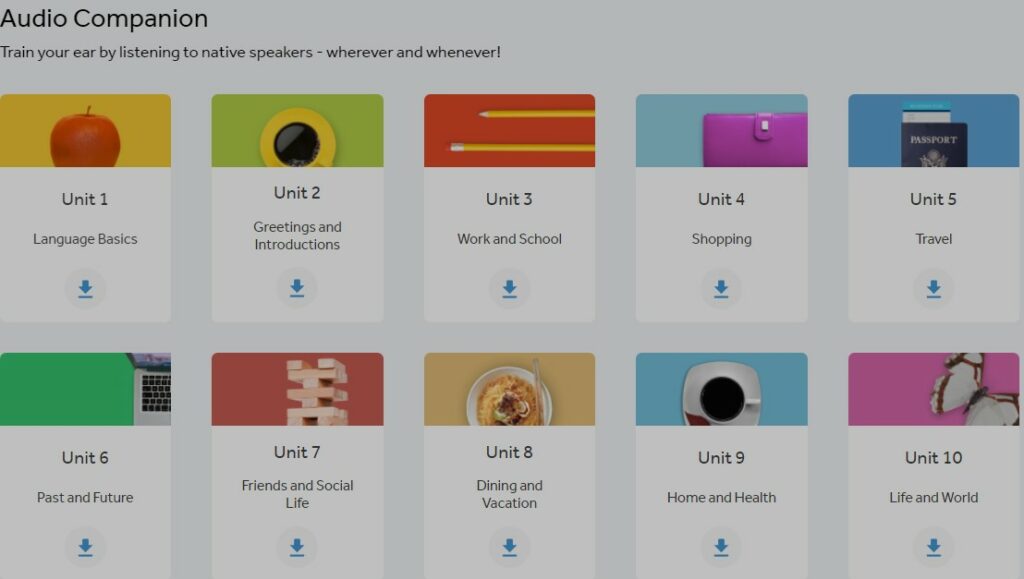
Users can now get English translations using drop-down menus, easing understanding when necessary, soothing an earlier worry about a lack of English translations for clarity. People commends the visual aspect of the language learning app, as it aids memorization and boosts confidence in speaking. No language program can make one fluent; real-world practice is what you need.
An other reviewer advises complementing Rosetta Stone with extra activities like watching YouTube videos, podcasts, music, and even Duolingo for a more thorough learning method. It is generally regarded as a useful tool for language acquisition since it helps with vocabulary recognition and speaking confidence, although users suggest combining it with exposure to a variety of languages for the best results.
Duolingo user Feedbacks
The reviewers praise Duolingo’s well-organized learning activities and highlight the smooth growth that keeps learners from being overburdened with new vocabulary. They highlight how manageable language learning is because to its applicability for both novices and regular learners. A user asks for the addition of other Indian languages from various states, arguing that doing so will make the program more beneficial.
While many people praise Duolingo as a fantastic resource for learning languages and boosting vocabulary, others lament the outdated style that prevented repeated repetition of tales. The new format aims to discourage skipping ahead, fostering thorough practice.
It is mentioned that the software is beneficial for novices, but it is also brought out that the learning process might become repetitive if it focuses mostly on new terms.
Some people encourage outside grammatical resources while others provide mixed reviews of grammar training. Despite these drawbacks, the app’s importance for practice is recognized, and it is advised to start with Duolingo but not to depend on it exclusively for language learning.
Although another user’s experience with Duolingo has been mostly favorable, they have run across challenges including sporadic audio issues and delayed chapter loading times.
Rosetta Stone
Total Languages: 25
Starts from: $11.99
30 Days Money Back Guarantee
What did We like?
🌍Looking for a comprehensive language learning experience? Rosetta Stone stands out for its immersive methodology, which mimics how people learn languages naturally. You will gain useful skills for situations in everyday life by taking grammar, pronunciation, and vocabulary sessions that are organized. It can take a little more effort, but its context-rich style promotes natural communication and in-depth comprehension. Rosetta Stone is the ideal language learning partner if you’re committed to mastering a language and appreciate a structured program.
- Immersive Learning
- Structured Curriculum
- Speech Recognition
- Comprehensive Lessons
- Visual Cues
- Cultural Insights
- Language Intuition
- Personalized Learning
- Translation-Free Approach
- Costly
- Limited Gamification
What did We like?
Duolingo is the best option if you want a flexible and enjoyable language learning experience. It easily fits into your hectic schedule because to its bite-sized courses and gamified features like streaks and leveling up. Duolingo provides exposure to a variety of linguistic hobbies and has an excellent collection of 43 languages. Its user-friendly design and community interaction make learning fun. Duolingo is the ideal learning partner if you want a casual, engaging method that promotes everyday practice. Duolingo provides a gamified learning environment with bite-sized courses in a variety of languages, but it may not be the best option for people looking to gain in-depth language proficiency.
- Gamified Learning
- Bite-sized Lessons
- Extensive Language Selection
- Freemium Model
- User-friendly Interface
- Community Engagement
- Quick Practice:
- Limited Depth
- Lack of Context
- User-generated Content
- Limited Offline access
Yes, both platforms offer a range of languages to choose from. Rosetta Stone provides a selection of 25 languages, while Duolingo offers an extensive array of 43 languages.
Absolutely. Both platforms cater to beginners, offering introductory lessons and gradually building up complexity. Rosetta Stone’s structured curriculum is ideal for a comprehensive foundation, while Duolingo’s bite-sized lessons ease beginners into learning.
Yes, both platforms offer offline access. Rosetta Stone’s mobile app allows offline learning, although some interactive elements might be limited. Duolingo’s mobile app also provides offline access to lessons (to some extent), but new content updates & entire courses might not be available offline.
Yes, both platforms offer pronunciation practice. Rosetta Stone’s speech recognition evaluates pronunciation accuracy, while Duolingo also includes exercises dedicated to improving pronunciation.
If you prefer a structured learning path, Rosetta Stone is an excellent choice. Its comprehensive lessons and context-rich methodology guide learners through a systematic curriculum.
While Rosetta Stone provides a structured curriculum and immersive approach, achieving fluency depends on various factors including your dedication, practice, and exposure to real-life language situations.
It depends on your learning style and goals. This app offers structured, comprehensive learning, while Duolingo provides a gamified, flexible approach. Consider what suits you best.
Rosetta Stone offers a 3-day free trial period without the need of credit card, but access to its full features typically requires a paid subscription. The platform’s in-depth curriculum and immersive approach come at a cost.

Meet Bill, a French language teacher and blogger who specializes in testing various language learning apps. He has been teaching French for nearly 4 decades and holds a Bachelor’s degree from Manhattanville College. With a passion for technology and how it can enhance language learning, Bill has spent years testing and reviewing different language learning platforms. His blog provides valuable insights into the pros and cons of each app, as well as tips for language learners of all levels.
